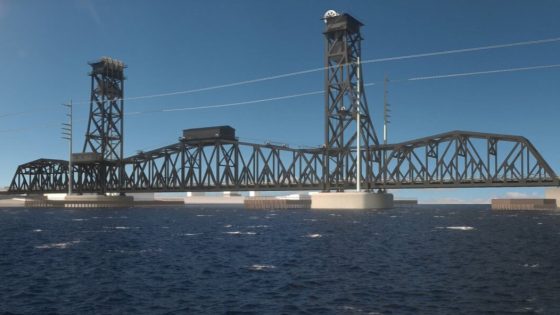
A University of Houston-led study is harnessing satellite-based MT-InSAR technology to revolutionize bridge monitoring, identifying vulnerabilities in North America and Africa while offering a cost-effective, continuous oversight method to prevent structural failures. This groundbreaking research, published in Nature Communications, is spearheaded by University of Houston’s associate professor Pietro Milillo and an international team of experts.
Their findings reveal that bridges in North America and Africa are among the most vulnerable, primarily due to age and insufficient monitoring. The study proposes a pioneering solution: satellite-based surveillance to preempt structural failures and enhance global infrastructure safety.
Identifying Vulnerabilities in Bridge Infrastructure
Examining 744 large-span bridges worldwide, the research uncovers a concerning trend, particularly in North America, where many bridges constructed during the 1960s have now outlived their design lifespans. In Africa, the situation is exacerbated by minimal structural monitoring systems. Such oversight gaps pose significant risks as traditional inspection methods often fail to detect subtle, slow-moving deformations caused by landslides, subsidence, or material fatigue.
The team’s innovative use of Multi-Temporal Interferometric Synthetic Aperture Radar (MT-InSAR) marks a key advancement. This remote sensing technology utilizes spaceborne radar to detect millimeter-scale shifts in structures over time, providing highly detailed, frequent, and broad coverage that is impossible to achieve with conventional on-site inspections or limited sensor networks.
The Role of MT-InSAR in Modern Monitoring
MT-InSAR leverages data from satellites like ESA’s Sentinel-1 and NASA’s new NISAR mission to track bridge stability from orbit. Milillo emphasizes that integrating satellite data into existing Structural Health Monitoring (SHM) frameworks could radically improve risk assessments.
Notably, the research found that satellite monitoring reduces the number of bridges classified as high-risk by one-third, and half of the remaining high-risk structures show potential for improved surveillance with this technology.
This dual approach—combining ground-based sensors with satellite observation—is especially vital for regions where installing sensors is prohibitively expensive or logistically challenging.
Implications for Infrastructure Safety
The benefits of satellite monitoring extend beyond cost and convenience. While in-person inspections might occur biannually and rely on subjective visual assessments, satellite monitoring delivers continuous, objective data with global reach. This capability is invaluable for regions like Africa and Oceania, where traditional structural evaluations are scarce or non-existent, leaving infrastructure dangerously underserved.
Dominika Malinowska from TU Delft, a key collaborator, notes that while MT-InSAR’s potential has been recognized academically, it has yet to become commonplace in engineering or governmental practice. This study’s global scale and practical findings provide compelling evidence for its adoption, signaling a future where satellite data is integral to infrastructure maintenance and disaster prevention worldwide.
Looking Forward: A New Era for Infrastructure Management
By offering nuanced insights into bridge deterioration, this research could herald a new era for infrastructure management, improving safety and resilience on a global scale. As aging bridges continue to bear growing transport demands, the integration of spaceborne monitoring tools promises a cost-effective, efficient, and far-reaching solution to safeguard these critical links well into the future.
Milillo commented, “By integrating satellite data into risk frameworks, we can significantly lower the number of bridges classified as high-risk, especially in regions where installing traditional sensors is too costly.”
The announcement comes as global infrastructure faces increasing pressures from climate change, population growth, and economic expansion. As such, the adoption of advanced technologies like MT-InSAR could play a pivotal role in ensuring the longevity and safety of vital transport networks worldwide.




